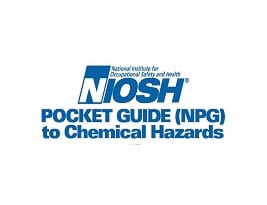Phenol

Overview
CAS No. 108-95-2
Phenol (C6H6O or C6H5OH) is a colorless to light-pink, crystalline solid with a sweet, acrid odor. Exposure to phenol may cause irritation to the skin, eyes, nose, throat, and nervous system. Some symptoms of exposure to phenol are weight loss, weakness, exhaustion, muscle aches, and pain. Severe exposure can cause liver and/or kidney damage, skin burns, tremor, convulsions, and twitching. Workers may be harmed from exposure to phenol.The level of harm depends upon the dose, duration, and work being done.
Phenol is used in many industries. It’s used for medicine as a slimicide, antiseptic, and disinfectant and to manufacture a number of products. Some examples of workers at risk of being exposed to phenol include the following:
- Workers in the petroleum industry
- Workers in plants where nylon is manufactured
- Workers in plants that manufacture epoxy resins
- Workers in plants that manufacture herbicides
NIOSH recommends that employers use Hierarchy of Controls to prevent injuries. If you work in an industry that uses phenol, please read chemical labels and the accompanying Safety Data Sheet for hazard information. Visit NIOSH’s page on Managing Chemical Safety in the Workplace to learn more about controlling chemical workplace exposures.
The following resources provide information about occupational exposure to phenol. Useful search terms for phenol include “carbolic acid, “hydroxybenzene,” “monohydroxybenzene,” “phenyl alcohol,” “phenyl hydroxide.”
NIOSH Chemical Resources
Related NIOSH Resources
- NIOSHTIC-2 search results on phenol– A searchable database of worker safety and health publications, documents, grant reports, and journal articles supported in whole or in part by NIOSH.
- Health concerns for workers who worked around Pentachlorophenolpdf icon. NIOSH Worker Health Study Summary, 2011.
Selected Publications
- Criteria for a Recommended Standard: Occupational Exposure to Phenol-DHHS (NIOSH) Publication No. 76-196 (July 1976)
Presents a standard to prevent the adverse effects of exposure to phenol over a working lifetime. - More articles from the NIOSH Manual of Analytical Methods:
- Phenol: Documentation for Immediately Dangerous to Life or Health Concentration: Documents the criteria and information sources that have been used by NIOSH to determine immediately dangerous to life or health concentrations.
Related Resources
- ATSDR’s Medical Management Guidelines (MMGs): Phenol
- ATSDR’s ToxFAQs: Phenol
- Toxicological Profile for Phenol (ATSDR)
- OSHA (Occupational Safety and Health Guidelines): Phenol
- OSHA (Chemical Sampling): Phenolexternal icon
- New Jersey Hazardous Substance Fact Sheets: Phenolexternal icon
- Acute Exposure Guideline Levels (AEGLs) (EPA): Phenol>external icon
- EPA Chemistry Dashboard: Phenolexternal icon
- EPA (Air Toxics): Phenolexternal icon
- Integrated Risk Information System (IRIS) (EPA): Phenolexternal icon
- NLM (Hazardous Substance Data Bank): Phenolexternal icon
- NLM (Haz-Map): Phenolexternal icon
- NLM (Household Products Database): Phenolexternal icon
- NLM (MedlinePlus): Carbolic Acidexternal icon
- Occupational Safety and Health (OSHA) Guideline for Phenol
- OSHA Hazard Communication websiteexternal icon
International Resources
- European Chemicals Agency (ECHA): Phenolexternal icon
- IPCS INCHEM: Phenolexternal icon
- IPCS INCHEM Poison Information Monograph 412: Phenolexternal icon
- Gestis Substance Database external icon
- International Chemical Safety Card: Phenol, Carbolic Acidexternal icon
- OECD Global Portal to Information on Chemical Substancesexternal icon
- WHO (Health and Safety Guide No. 88): Phenolexternal icon
- WHO (Environmental Health Criteria 161): Phenolexternal icon



